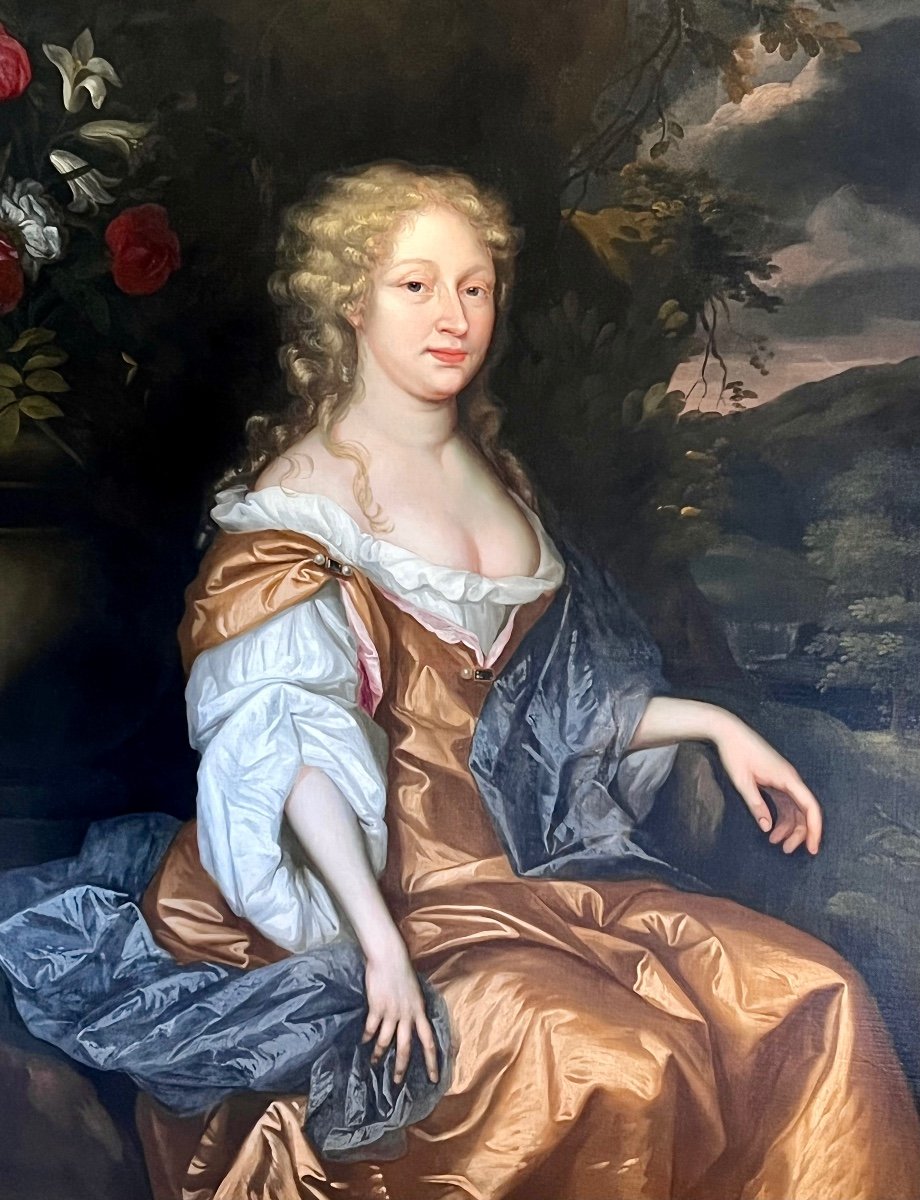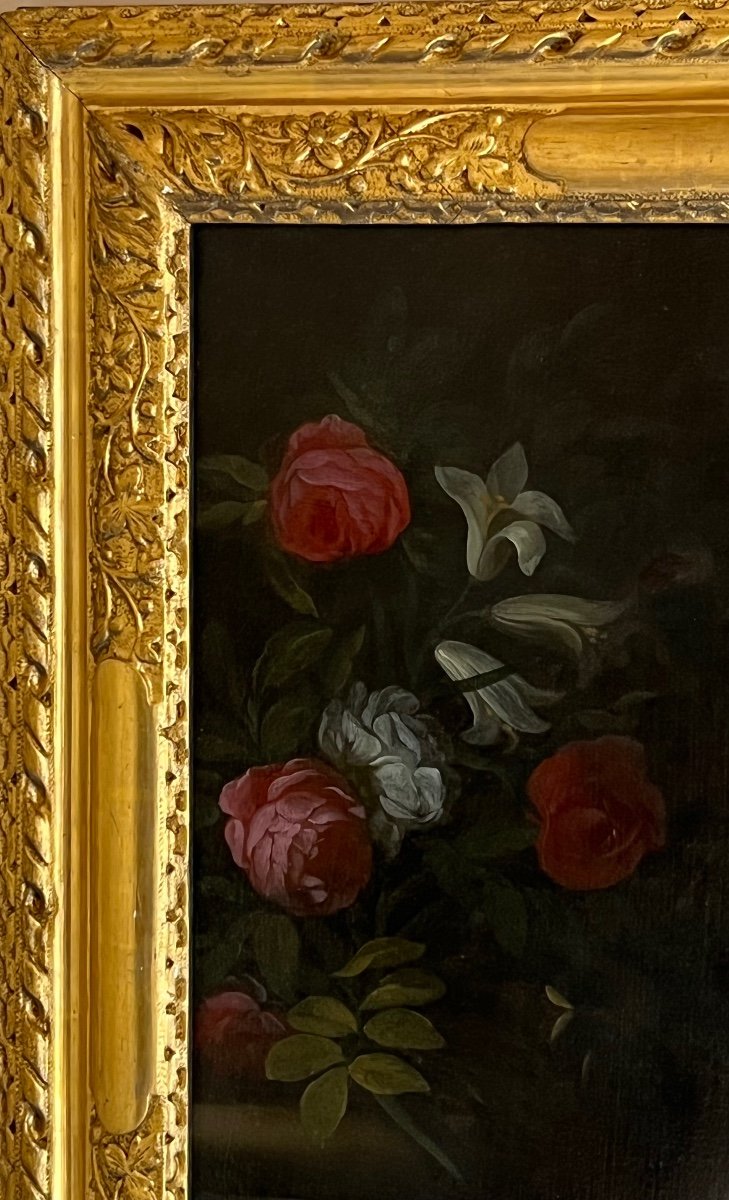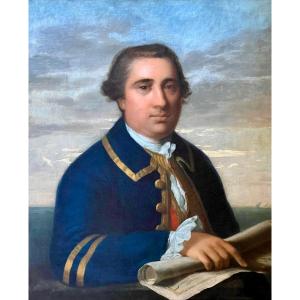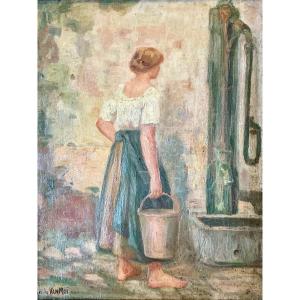The as yet unknown sitter is pictured three quarter length within an extensive landscape wearing a gold robe and white chemise. She sits beside a flower filled urn under the shade of an oak tree. This stone urn contains both roses and lilies, and in the language of flowers, roses are the emblem of Venus whilst lilies denote purity.
The way in which the sitters sumptuous dress drifts into drapery places this portrait in the late seventeenth century tradition of the portraiture of Sir Peter Lely, who in turn was drawing on the tradition established in the 1630s by Sir Anthony Van Dyck at the court of Charles I.
These artists favoured an innovative way of dispensing with the details of real dress to show a generalised draped clothing that relies on large sleeves and shimmering silk skirts for its appeal. When Lely died his inventory listed studio props of silk fabric in a great many colours, including ‘Isabella Cloth of Gold’, and ‘Livered coloured Saten’ amongst others. Gold or saffron coloured robes such as the one worn by our sitter were extremely fashionable and costly, and wearing them may have referenced the colour used for brides in Roman times.
Our sensitive sitter looks delightfully deshabille, not only does her gown have a low and wide neckline that reveals her décolletage, it also has fastenings which are falling open centre front. They reveal both an exquisite flash of pink silk lining, and also the sitters pronounced hemi-spherical bosoms. To complete the look her hair is worn in soft carefree curls which cascade naturalistically from her centre parting.
Another and perhaps less expected area of focus is the sitters arms and long elegant fingers. This expressive use of lower arms as a focus of attention and site of erotic appeal is a continuation from the work of Van Dyck who was known for the long elegant fingers that we see in so many of his portraits.
This exceptionally fine and sensitively characterised work is in an excellent atet of conservation. It is notable for its engaging and dynamic drapery, bravura brushstrokes and the fact that it is offered in its likely original hand carved and gilded 17th century Lely style frame, which is itself a work of art.
I am most grateful to Jacqui Ansell, Senior Lecturer, Christie’s Education for the detailed information and analysis that she has provided on fashion, costume and historical context.
Higher resolution images on request.
Worldwide shipping available.
Canvas: 50” x 40" / 127m x 102cm.
Framed:48" x 58" / 148cm x 122cm.


























 Le Magazine de PROANTIC
Le Magazine de PROANTIC TRÉSORS Magazine
TRÉSORS Magazine Rivista Artiquariato
Rivista Artiquariato
